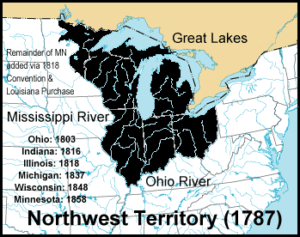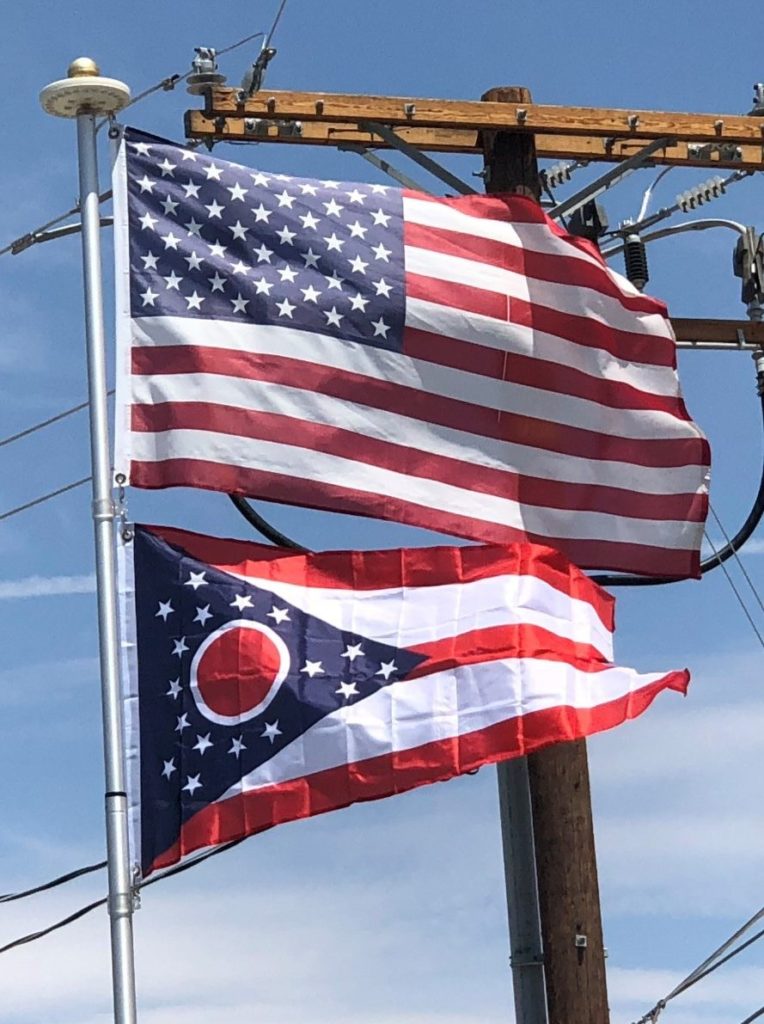Around 100 BC, the Adena evolved into the Hopewell people. Like the Adena, the Hopewell people participated in a mound-building culture. They were also a powerful trading society, managing to knit together a network that passed goods throughout a third of the continent. The Hopewell, however, disappeared from the Ohio Valley in about 600 AD. Little is known about the people who replaced them, although many Siouan-speaking peoples from the Plains & East Coast claim them as ancestors & say they lived throughout the Ohio region until approx. the 13th century. It is possible that the rise of the Mississippian Culture was the downfall of the Hopewell, as they began to rise to prominence on the Mississippi River around the same time that the Hopewell Culture died out.
Researchers have identified three additional, distinct prehistoric cultures: the Fort Ancient people, the Whittlesey Focus people, and the Monongahela Culture. All three cultures apparently disappeared in the 17th century, perhaps decimated by infectious diseases spread in epidemics from early European contact.
During the 18th century, the French set up a system of trading posts to control the fur trade in the region. As a result of the Treaty of Paris, the French ceded control of Ohio and the remainder of the Old Northwest to Great Britain. In the Treaty of Paris in 1783, Britain ceded all claims to Ohio country to the United States.
The United States created the Northwest Territory under the Northwest Ordinance of 1787. Slavery was not permitted in the new territory. Settlement began with the founding of Marietta by the Ohio Company of Associates, which had been formed by a group of American Revolutionary War veterans. Following the Ohio Company, the Miami Company claimed the southwestern section, and the Connecticut Land Company surveyed and settled the Connecticut Western Reserve in present-day Northeast Ohio.

Under the Northwest Ordinance, areas of the territory could be defined and admitted as states once their population reached 60,000. Although Ohio’s population numbered only 45,000 in December 1801, Congress determined that the population was growing rapidly and Ohio could begin the path to statehood. The assumption was that it would exceed 60,000 residents by the time it was admitted as a state.
On February 19, 1803, U.S. President Thomas Jefferson signed an act of Congress that approved Ohio’s boundaries and constitution. However, Congress had never passed a resolution formally admitting Ohio as the 17th state. The current custom of Congress declaring an official date of statehood did not begin until 1812. On August 7, 1953, the year of Ohio’s 150th anniversary, President Eisenhower signed a congressional joint resolution that officially declared March 1, 1803, the date of Ohio’s admittance into the Union.
In 1830 under President Andrew Jackson, the US government forced Indian Removal of most tribes to the Indian Territory west of the Mississippi River.
In 1835, Ohio fought with Michigan in the Toledo War, a mostly bloodless boundary war over the Toledo Strip. Only one person was injured in the conflict. Congress intervened, making Michigan’s admittance as a state conditional on ending the conflict. In exchange for giving up its claim to the Toledo Strip, Michigan was given the western two-thirds of the Upper Peninsula, in addition to the eastern third that was already considered part of the state.
